
Research Interests
My research interests are in a broad area of biological engineering. Over the years, we have applied chemical engineering principles to the problems in the domain of bioprocesses. A brief glimpse of our work and important results are highlighted below.
Bioprocess involving microbial cells and enzymes are multiphase processes with biotic phase (microorganisms) and abiotic phase consisting of gas, liquid and solid. Our research in the area of modeling of bioprocesses has focused on understanding the interactions between multiphase transport phenomena and biochemical reaction kinetics. Several processes investigated include multiphase multienzyme oxidation of glucose, growth and metabolite production in hollow fiber bioreactors and bioremediation using immobilized cell systems.
Multiphase Bioreactors
Metabolic Control Analysis
Pichia Pastoris Fermentaion
Computational Fluid Dynamics Modeling of Bioreactors
Computation fluid dynamics has emerged as an important tool for understanding of mass-energy-momentum interactions in multiphase reactors. One of the research area of interest to us is extending the application of CFD to enhancing the understanding of biotic-abiotic interactions in bioreactor. We are investigating several systems such as anaerobic wastewater treatment processes and photo-bioreactors for algal growth.
Anaerobic Bioreactor for Coffee Plantation Effluent
Algal Growth in Raceway Ponds
In raceway ponds uniform circulation of nutrients and CO2 and exposure of sunlight for the algal cells is required. However higher mixing rates damage algae cell membrane. Flow profile of the Raceway ond is obtained by using CFD revealed presence of large patches of dead zones (regions with : velocity < 0.1 m/s) and high circulations (non-uniform distribution of flow) in the raceway pond which are highly undesired. In order to improve the mixing. We tested design of delta wings in the raceway pond. CFD simulations of improved design showed a) complete elimination of dead zones in the curvature sections, b) more uniform distribution of flow velocities in straighter channels. For qualitative analysis, mixing studies are performed by solving tracer transport equation for both the reactor designs which were operated equal power input. Results reveal that the presence of two delta wings in the domain has significant localized impact but not much to the overall mixing in the reactor. Further quantification can be performed by analyzing the influence of these mixing characteristics on the growth of microalgae in the two reactors. As the time scale required for fluid flow in the reactor (raceway pond) to attain a quasi-steady state (i.e, physics of the domain) IS around few minutes whereas the growth of algae takes place over period of 2-3 months. So, it is nearly impossible to simulate the CFD code at shorter time steps with the existing computational resources. This lead us to follow a two stage simulation developed, in which initially physics of the system is allowed to converge with shorter time steps and then kinetic equations for the growth of algae is solved with larger time steps.
[top]
Multiphase Bioreactors

Schematic representation of transport and reaction processes in a single fibre of the HFBR

Schematic representation of tray bioreactor for solid state
fermentation process
Metabolic Control Analysis
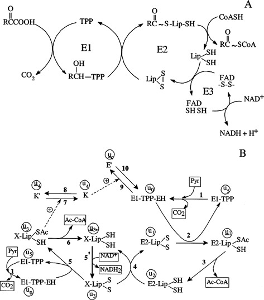
General reaction mechanism of the pyruvate dehydrogenase multienzyme (PDH) com
Pichia Pastoris Fermentaion
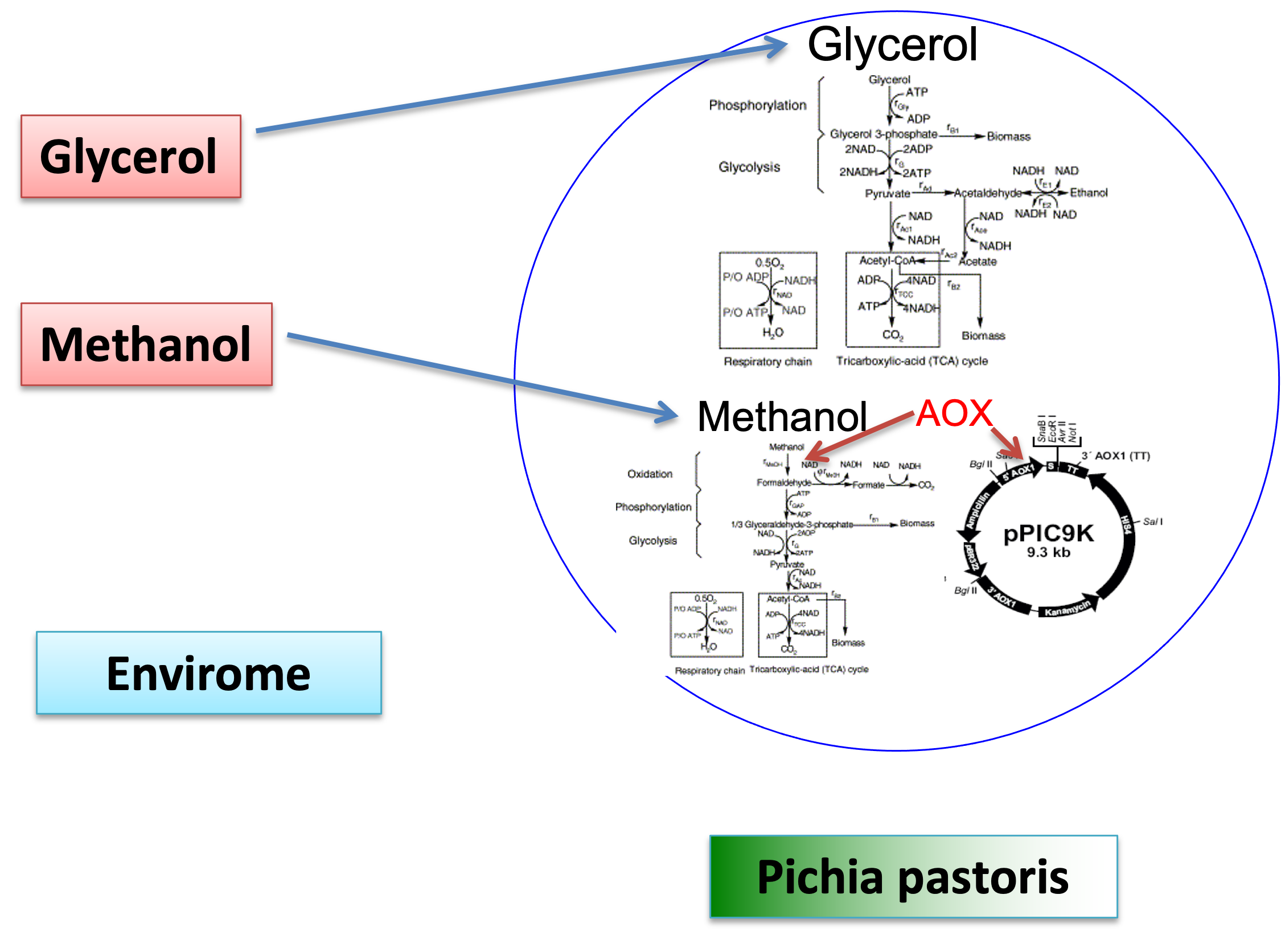
Schematic representation of Pichia pastoris fermentation

Modeling hCG Fermentation
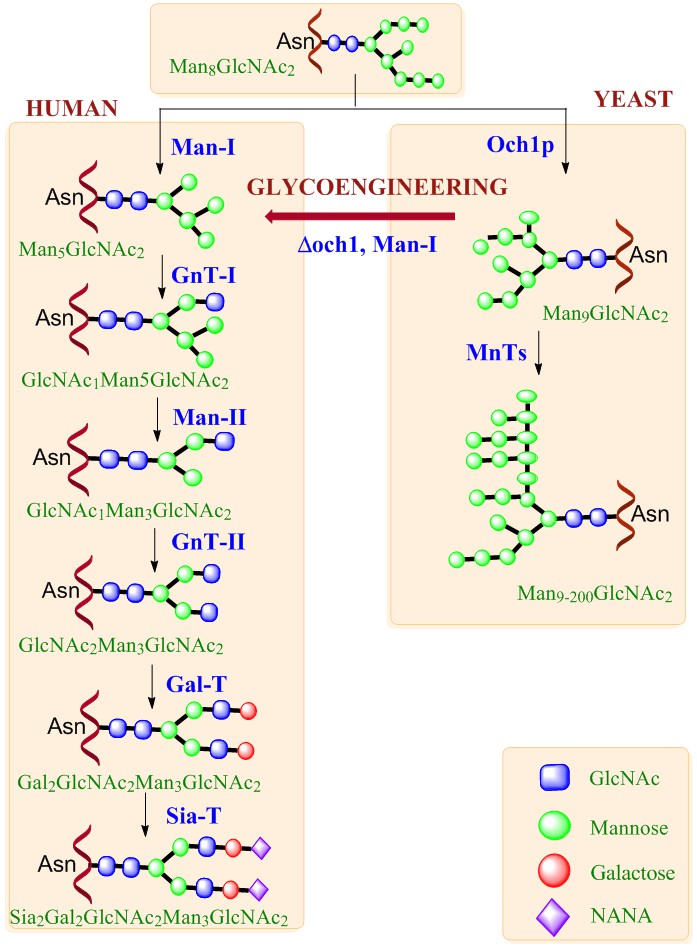
A comparison of N-glycosylation pathway in Human and P. pastoris
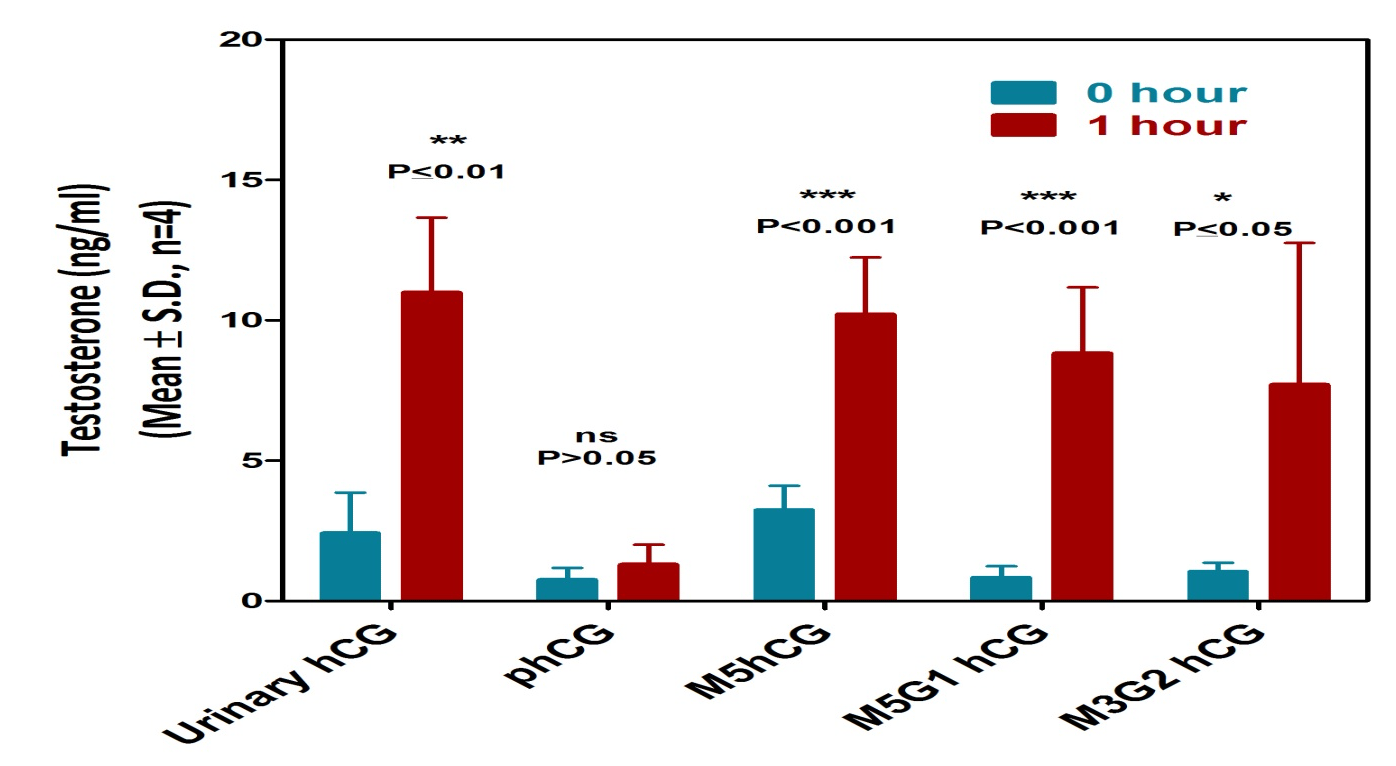
In vivo analysis
Computational Fluid Dynamics Modeling of Bioreactors
Computation fluid dynamics has emerged as an important tool for understanding of mass-energy-momentum interactions in multiphase reactors. One of the research area of interest to us is extending the application of CFD to enhancing the understanding of biotic-abiotic interactions in bioreactor. We are investigating several systems such as anaerobic wastewater treatment processes and photo-bioreactors for algal growth.
Anaerobic Bioreactor for Coffee Plantation Effluent
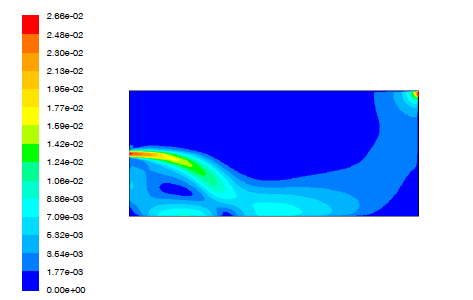
Contours of liquid velocity in waste water treatment bioreactor
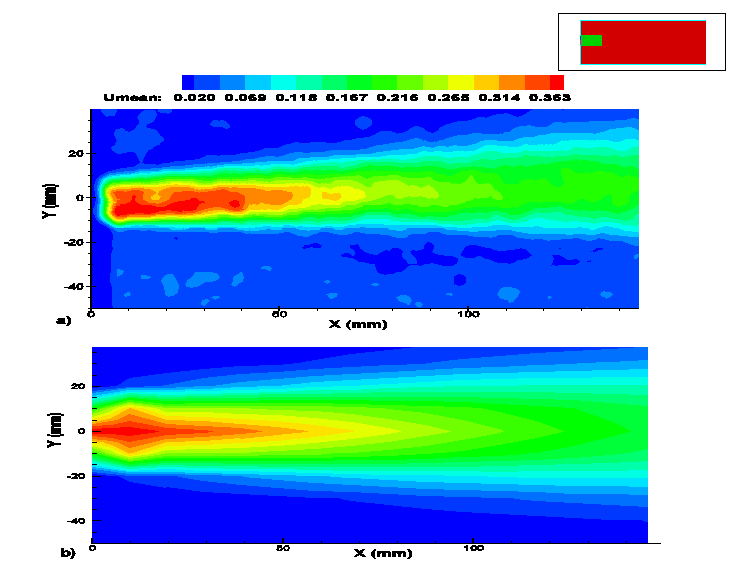
Contours of X-direction mean velocity (a) Experimental and (b ) Simulation
Algal Growth in Raceway Ponds
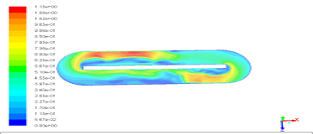
Contours of liquid velocity in original raceway pond
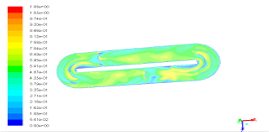
Raceway pond with 2 delta wings and deflectors.
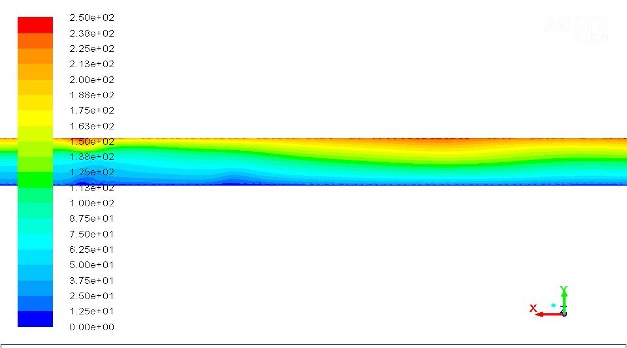
Distribution of light intensity along the depth of the raceway pond.
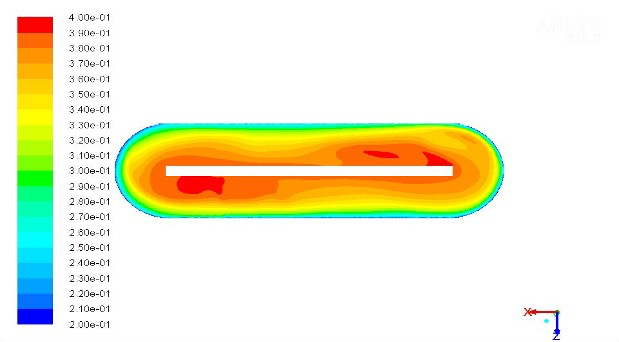
Distribution algal biomass in the raceway pond.
In raceway ponds uniform circulation of nutrients and CO2 and exposure of sunlight for the algal cells is required. However higher mixing rates damage algae cell membrane. Flow profile of the Raceway ond is obtained by using CFD revealed presence of large patches of dead zones (regions with : velocity < 0.1 m/s) and high circulations (non-uniform distribution of flow) in the raceway pond which are highly undesired. In order to improve the mixing. We tested design of delta wings in the raceway pond. CFD simulations of improved design showed a) complete elimination of dead zones in the curvature sections, b) more uniform distribution of flow velocities in straighter channels. For qualitative analysis, mixing studies are performed by solving tracer transport equation for both the reactor designs which were operated equal power input. Results reveal that the presence of two delta wings in the domain has significant localized impact but not much to the overall mixing in the reactor. Further quantification can be performed by analyzing the influence of these mixing characteristics on the growth of microalgae in the two reactors. As the time scale required for fluid flow in the reactor (raceway pond) to attain a quasi-steady state (i.e, physics of the domain) IS around few minutes whereas the growth of algae takes place over period of 2-3 months. So, it is nearly impossible to simulate the CFD code at shorter time steps with the existing computational resources. This lead us to follow a two stage simulation developed, in which initially physics of the system is allowed to converge with shorter time steps and then kinetic equations for the growth of algae is solved with larger time steps.
[top]
Optimal design and control of fermentation processes is a challenging dynamic control problem. We have carried out pioneering work in the area of optimization fed-batch bio-reactor system. Our research in this area focuses on developing computationally efficient algorithms, which combine the rigour of optimal control theory and advanced search techniques such as genetic algorithm.
Understanding optimal feeding policies for fed-batch fermentation.
Genetic Algorithm and Neural Network Based Optimal Control
[top]
Understanding optimal feeding policies for fed-batch fermentation.

Optimal Feed Rate Profiles
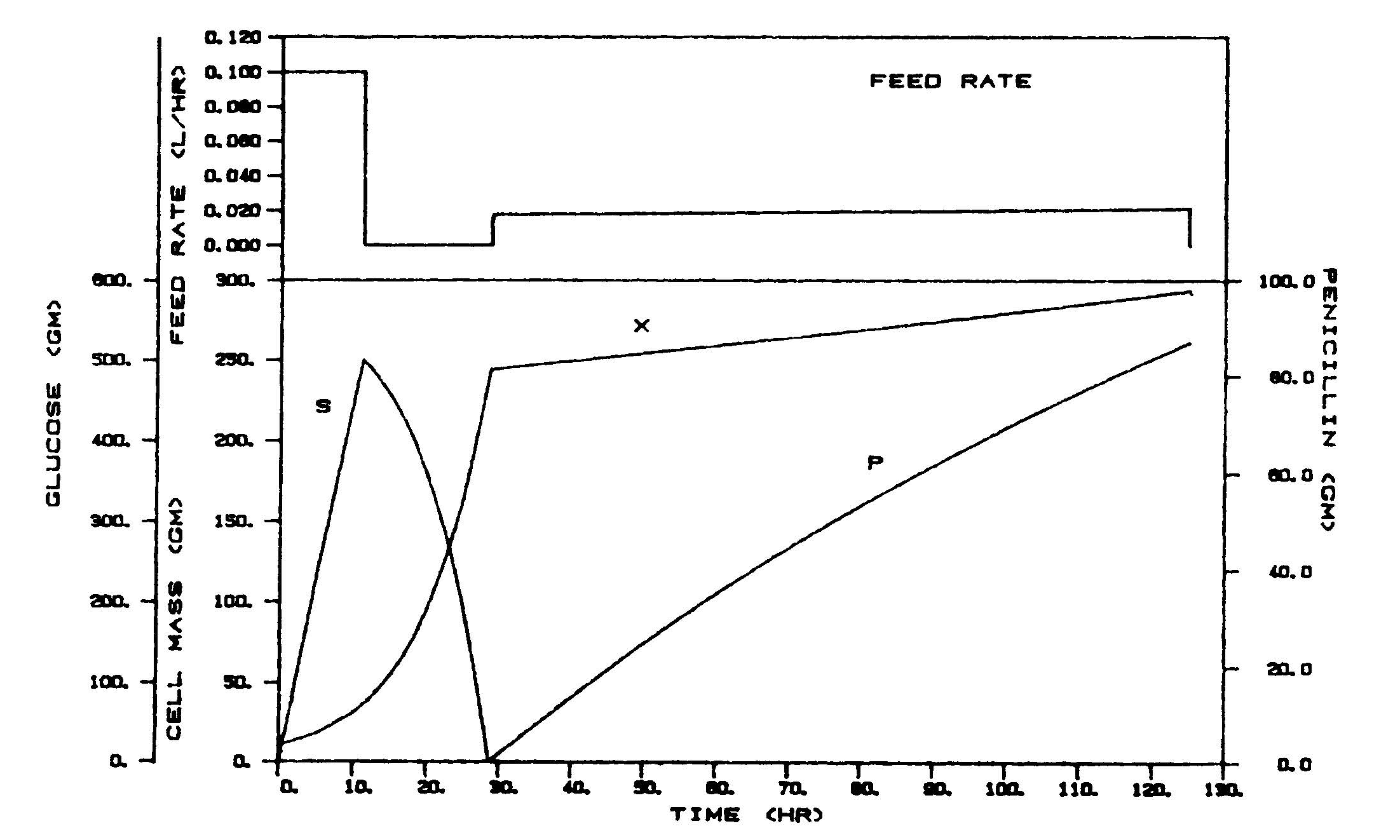
Optimisation of Penicillin Fermentation.
Genetic Algorithm and Neural Network Based Optimal Control

Population chromosome for fed-batch fermentation
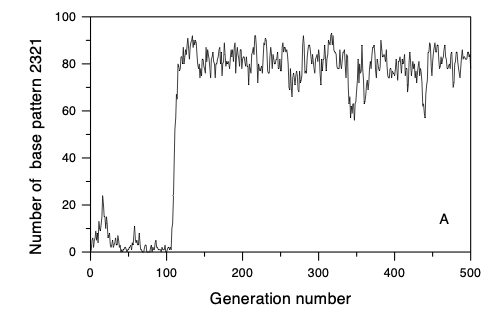
Evolution of feeing pattern

Multiobjective optimisation of Pichia pastoris
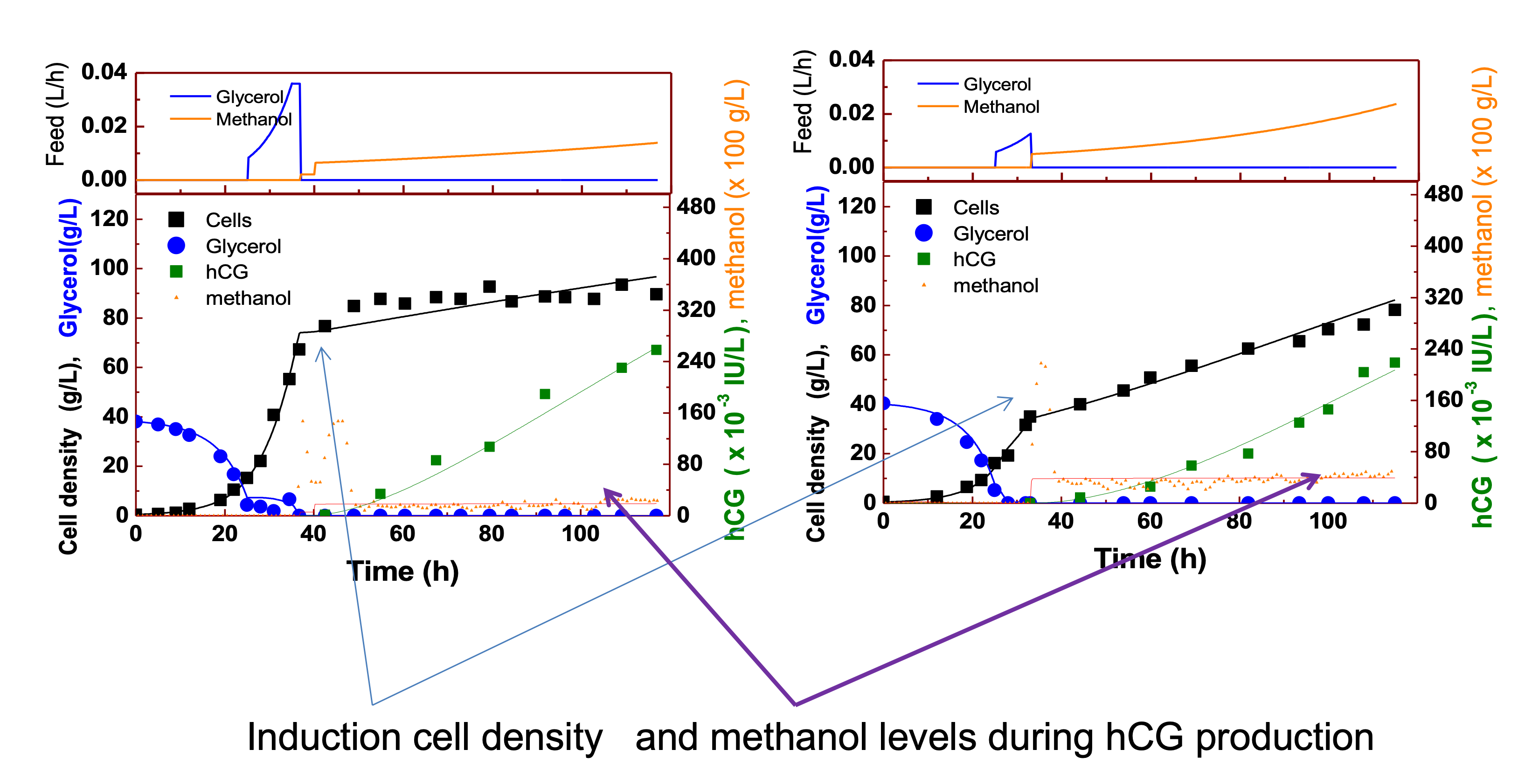
Pareto optimal from for hCG production
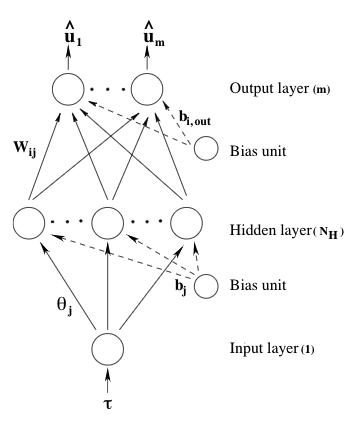
A three-layer feed-forward ANN architecture
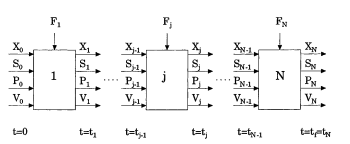
Schematic representation of fed-batch process in discrete time domain
[top]
Microbial contamination in water is a global issue which is escalating with severe health effects every year. Efforts made for safe drinking water access are not efficiently translating into reduction of the mortality rate worldwide. Therefore, considering the fact that poor countries like India, has to implement some cost and energy efficient measures for water treatment systems and improve their reach and awareness at every level. The statistic suggests that more than 1 billion people fetch their daily needs of water through unsafe water sources. In recent years photocatalysis has been used in wide variety of applications such as water purification, air purification, hydrogen generation, degradation of methanol, oxidation of H2S, oxidation of toluene and trichloroethylene, CO2 conversion, self-cleaning glass coating, paint coatings etc. Our studies focus on microbial inactivation using photocatalysis.
Inactivation Using TiO2
Strategies for extended absorption for efficient designs of photocatalysts
[top]
Inactivation Using TiO2
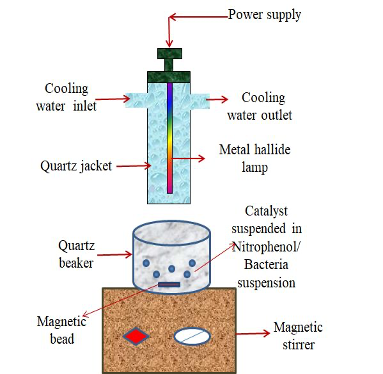
Schematic representation photo-bioreactor
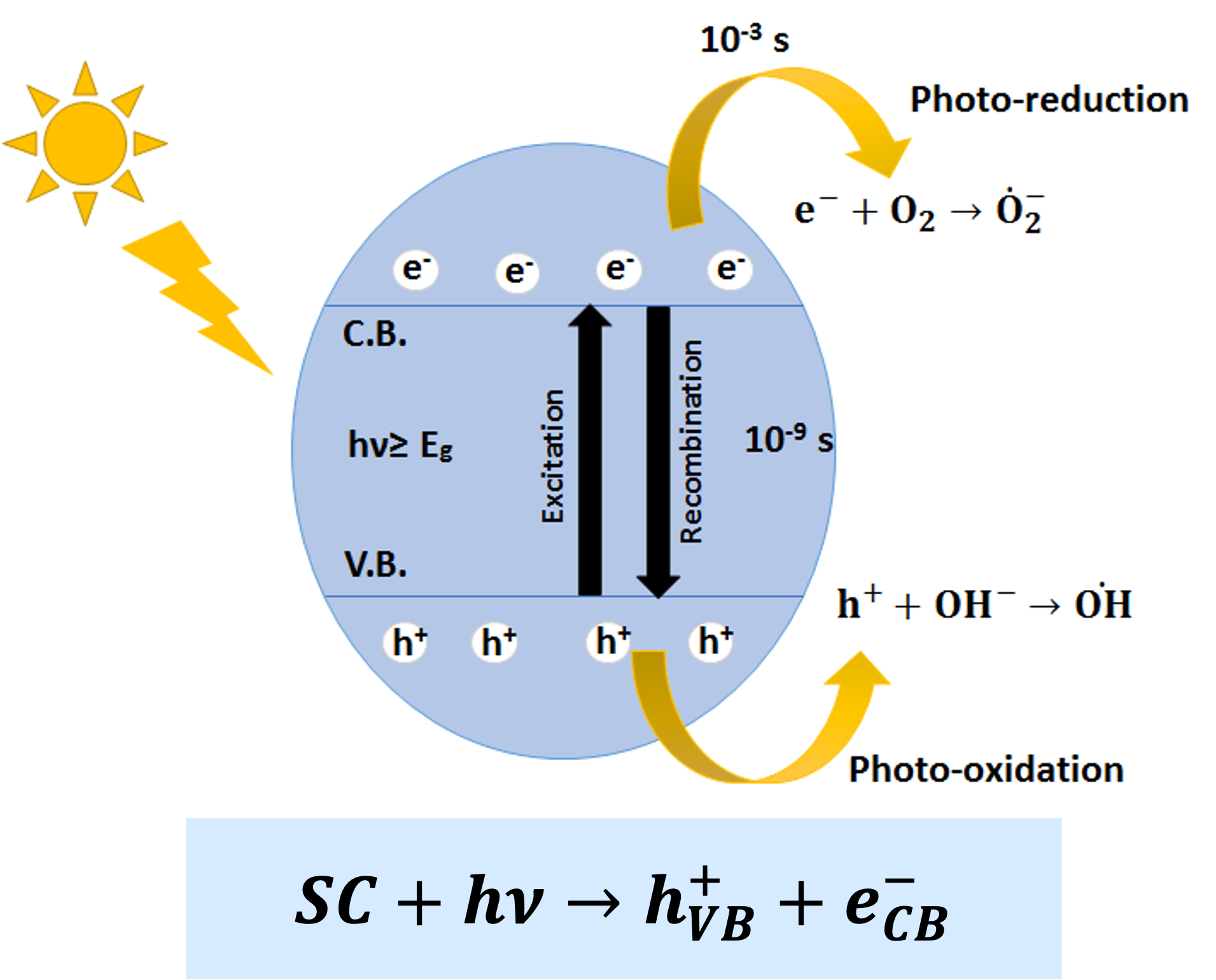
Schematic of radical generations in a semiconductor.
Strategies for extended absorption for efficient designs of photocatalysts
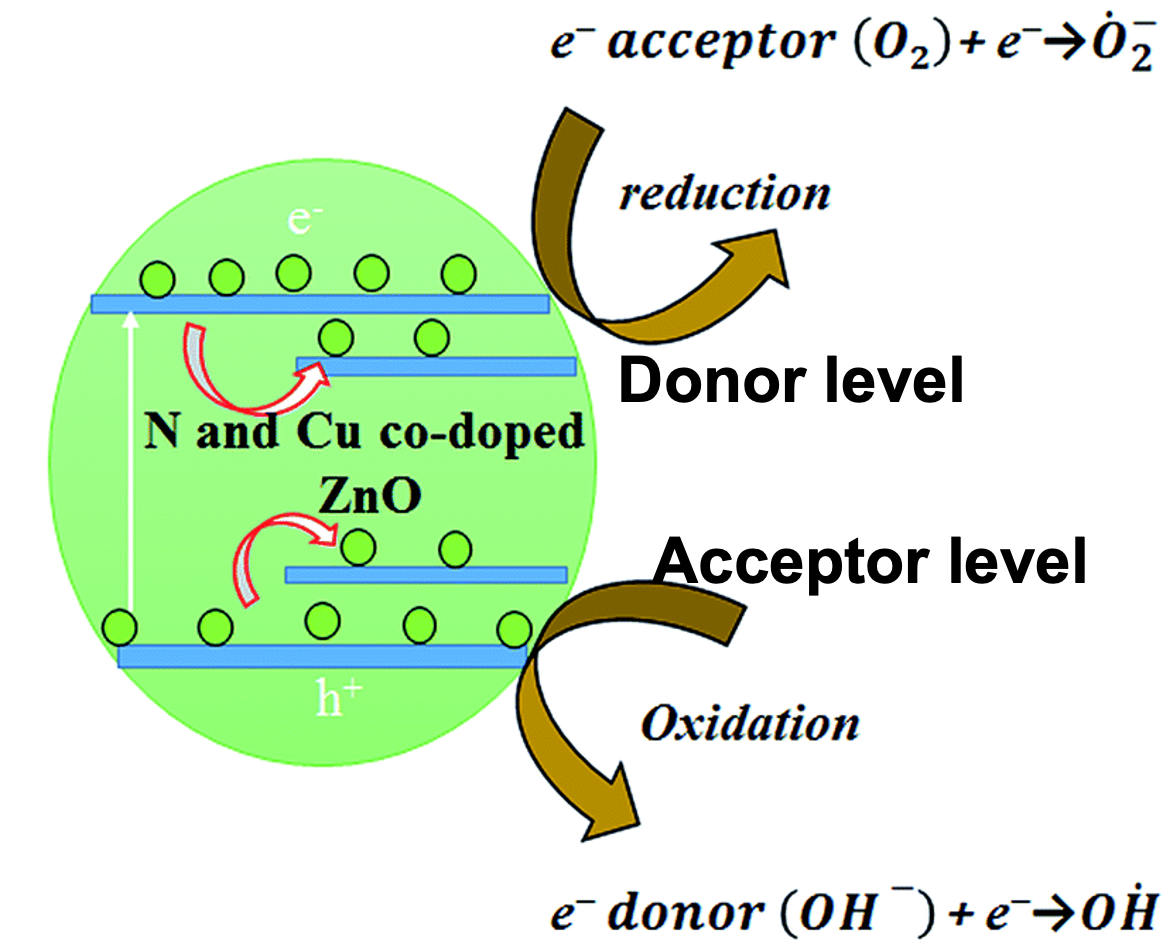
Narrowing of band gap

. Schematics of possible photocatalytic mechanisms (a) type-1 (b) type-2 (c) Z-scheme (d) Z-scheme/type-2.
[top]
Various types of biomass residues such as leafy waste, domestic solid waste, are potential source of energy if they can be efficiently converted to biogas. Unfavourable physical properties - biomass particles generally have a lower density than the digester liquid or acquire it as soon as biogas bubbles adhere to them, render conventional biogas reactors such as slurry reactors unsuitable for the treatment of biomass. Pre-treatment alternatives are costly. We, therefore, are focusing of using solid state fermentation processes and bioreactors for the treatment of biomass residues. The process of transformation of polysaccharide from biomass to biogas consists of two steps: acidogenesis, polysaccharide to acids and methanogenesis, acids to methane. Each step requires different type of bacteria.
Solid-state Stratified Bed (SSB) fermentation
Plug Flow Biogas Digestor
[top]
Solid-state Stratified Bed (SSB) fermentation

Schematic representation of solid-state stratified bed biogas digestor
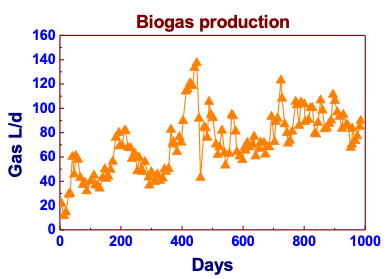
Long term gas production pattern in a SSB pilot plant.
Plug Flow Biogas Digestor
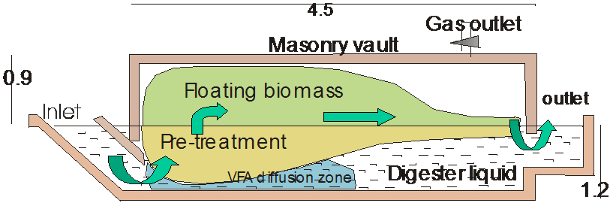
Schematic representation of plug flow digestor
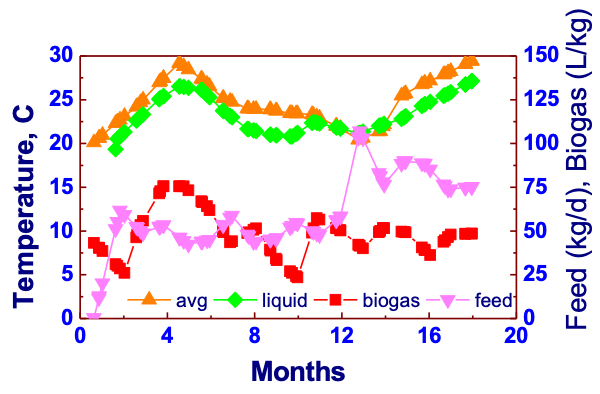
Long term gas production pattern plug flow biogas digester
[top]
Dissolution of metals from ores, removal of metal ions from effluents and generation of acidic waters at mine sites are some of the processes which result from mineral-microbe interactions. In the area of mineral biotechnology, we have investigated several processes which result from mineral-microbe interactions, namely, microbial ecology of gold ore and bauxite deposits, dissolution of metals from minerals and ores, removal of metal ions from effluents and generation of acidic waters at mine sites. Our research focuses on understanding the mineral-microbe interactions and developing suitable mathematical models for quantification of these processes.
Bioleaching of minerals and ores
Biosorption of metal ions
[top]
Bioleaching of minerals and ores
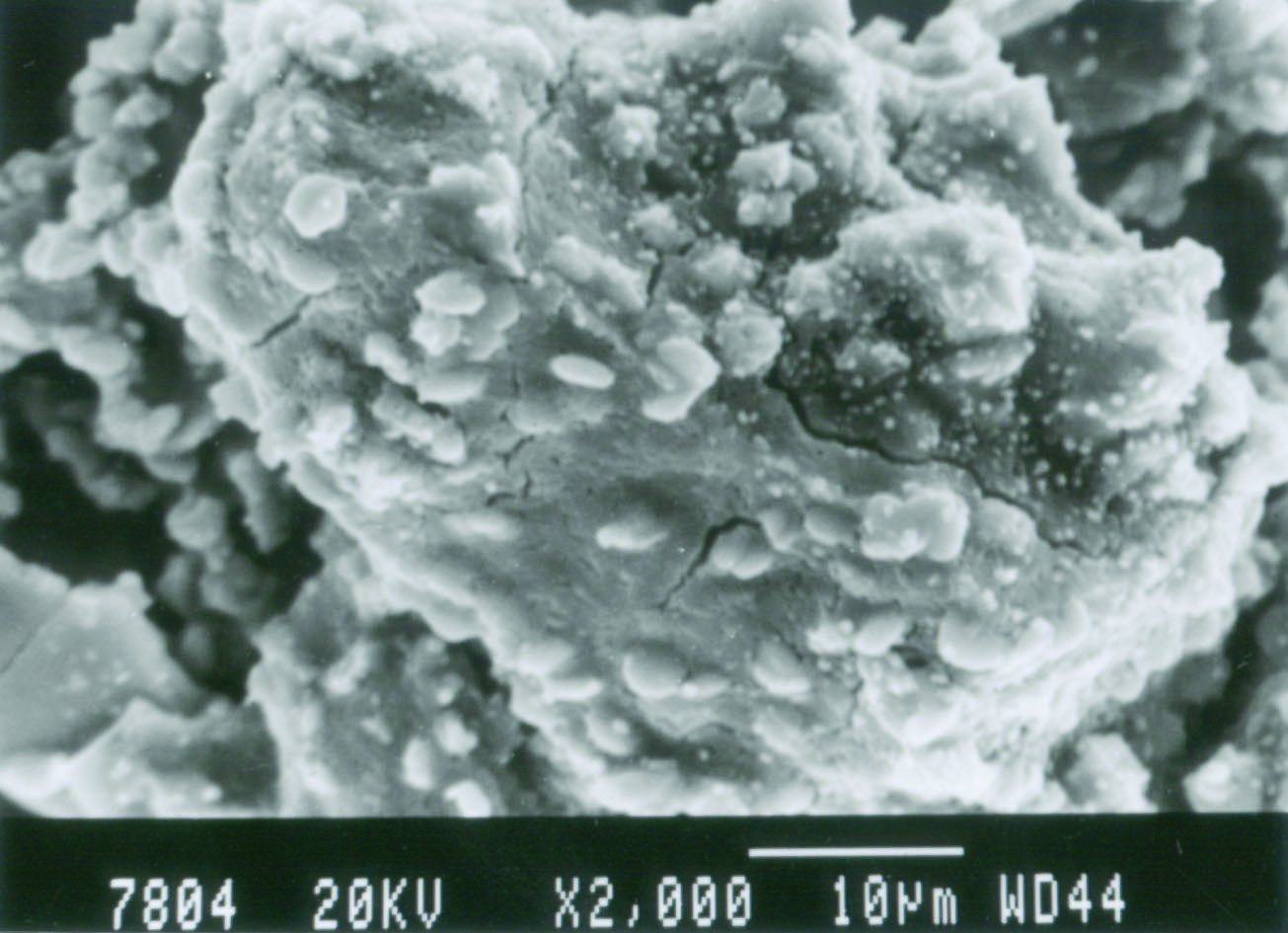
Thiobaccilus ferroxidans attached to sulphide mineral
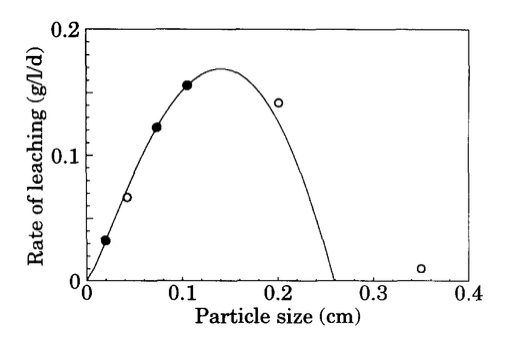
Leaching rate as a function of particle size
Biosorption of metal ions
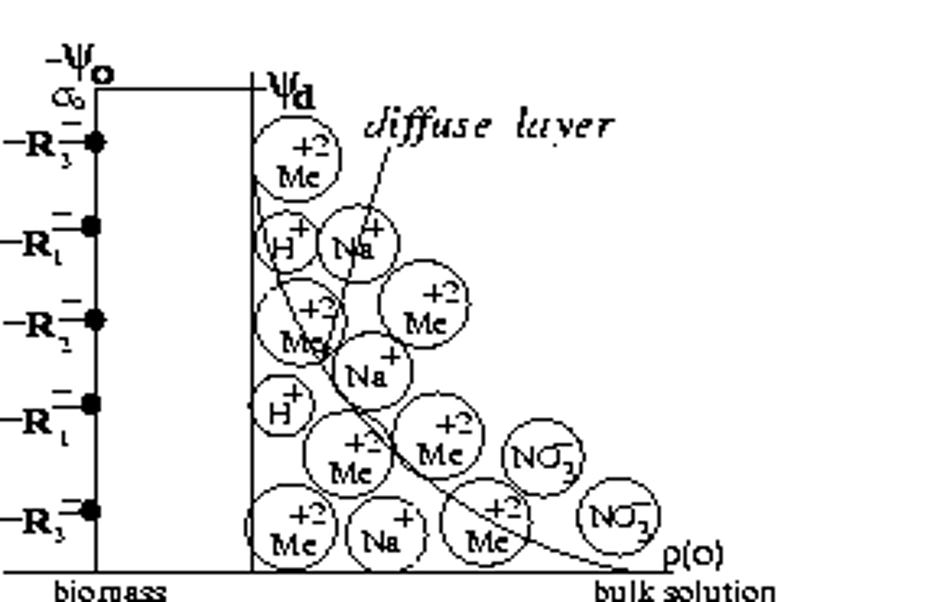
Modeling framework for biosorption
[top]
Demonstration Bioreactor Plant for Hutti Gold Mines Limited, Hutti, Karnataka
High Throughput Waste Water Treatment Plant
Online Optimisation of Rifamycin Fermentation
[top]
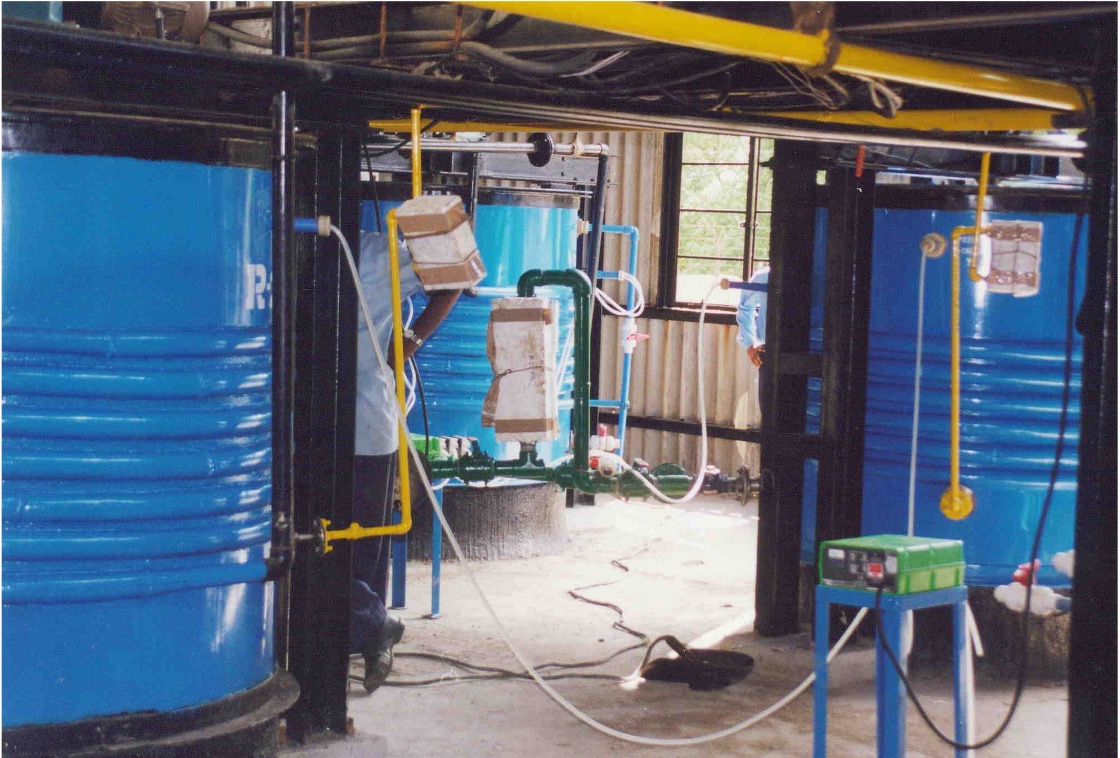
Continuous bioreactor assembly at Hutti Gold Mines, Karnataka
High Throughput Waste Water Treatment Plant
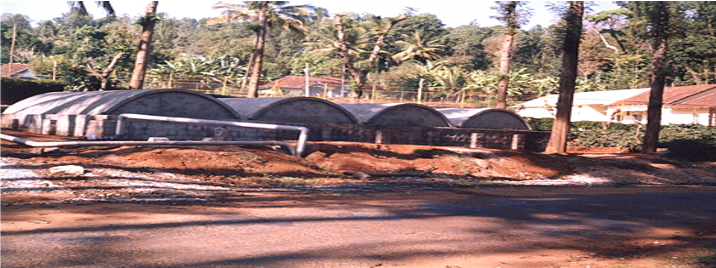
Coffee plantation effluent treatment plant at Chikmagaluru, Karnataka
Online Optimisation of Rifamycin Fermentation

Schematic of an exemplary on-line optimization of fermenter unit.e
[top]